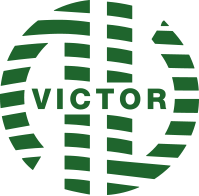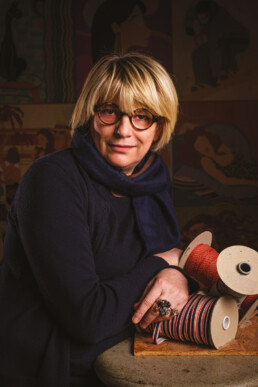Fashion and the pandemic: a look at the future of fashion
Fashion and the pandemic: a look at the future of fashion
We Ar Magazine interviewed Regina Bertipaglia, owner of Nastrificio Victor SpA, on the occasion of the round table entitled “The Future of Fashion”.
“As we begin to look at life post Covid-19, how do you think the fashion industry will change? How do you anticipate the supply and demand chain and customer management to alter? And what will it take for brands / retailers to recover their losses?”
“The pandemic accelerated the movement towards sustainable fashion that was already under way, which was met with the response of consumers who embraced a concept of “ethics” rather than “style” during periods of crisis. It has also been seen that digitisation processes cannot be delayed, as they will play an increasingly key role.
Sustainability and digitalisation therefore represent the way to escape market turbulence unscathed, and strengthened by added values.
This must be taken into account in the reorganisation of the post-pandemic fashion industry. We must seize the opportunity to develop ourselves with new strategies and reaffirm our commitment to an increasingly green fashion future, which includes a review of its seasonal organisation”.
Sustainability and digitalisation
Sustainability and digitalisation
Topics of the sector: production processes and the pandemic
Working towards true sustainability
Environmental sustainability currently represents a highly topical and new issue for the fashion sector. The growing interest in so-called green fashion has led to greater awareness in the creation of a production process that protects both the environment and consumers. Over the years, what we refer to as fast fashion has led to a sharp increase in the quantity of clothing that is produced, used, and quickly considered waste. It is also known that the textile industry is one of the causes of many environmental problems. As relates to its high consumption of water, it is estimated that textile production is responsible for 20% of polluted drinking water worldwide. The textile industry does not limit itself to polluting water: according to data provided by the European Environment Agency, the purchase of textile products involved the emission of approximately 654 kg of greenhouse gases in 2017 alone.
Consumers are also increasingly aware, and are not satisfied solely by a nice garment to wear: they want to know how it is made and ensure that the ways, times, and places of production do not negatively impact the environment or the living conditions of staff employed.
Sustainable products represent an important step for an industrialised economy, which pushes usto look at the issue of environmental impact closely and rethink our role as producers. How? By minimising any negative effects on the environment where technically possible and economically sustainable. From the point of view of our core business, the most important value is undoubtedly that of sustainability, understood as longevity: we must fight for this value, otherwise we will not achieve anything.
By following the new plan that the European Commission approved in March 2020, which involves
the textile industries in promoting the reuse of products in the sector to achieve a circular economy, Nastrificio Victor is one of the industrial companies that has embarked on an eco-friendly path.
We use production processes that reduce the use of water, limit CO2 emissions, promote clean energy, invest in high technological performance, recycle, and give new life to waste. As proof of the quality of the fabrics used for eco-sustainable clothing, certifications are issued by international bodies, which are valid as a guarantee for consumers as regards compliance with sustainability standards. In this context, the company management of Nastrificio Victor has introduced an Environmental Management System for all activities in order to fully comply with the UNI-EN ISO 14001 standard, which serves to improve process and product efficiency,while considerably reducing energy use and environmental impact.
In order to achieve these objectives, our company focuses on continuous improvement that involves all staff, promoting all direct actions to eliminate any significant risks for the environment due to processes, processing activities, and products. New organisational, instrumental, and economic resources have been made available, which allow a long-term improvement process and enter into the detail of concrete, daily actions on individual existing and future aspects. As such, we can offer our customers valuable, reliable, and environmentally friendly products.
Process digitisation
Among the other innovations introduced, we have focused on the value of going digital, and all of the advantages that this process entails. In collaboration with the German company Color Digital, Nastrificio Victor has started the digitisation process for all items. This process allows us to collaborate with our customers, of which many are already active at an advanced digital stage, in making our collections available in digital format with high photographic resolution, and as 3D models. Our cloud-based platform allows the product to be modified, by changing the colour, finish, and texture of the fabric, in order to obtain an article that meets the customised needs of the customer. The digital model thus created can in turn be inserted into the customer’s digital collections, for a detailed view of the application on each individual garment. Our cloud-based platform interacts with customers’ graphics software.
We have also developed an online showcase project, which offers a preview of our seasonal collections and be able to operate in an environment similar to that of a digital trade show. In times of pandemics, with the suspension of sector events and a ban on gatherings, we offer customers the possibility of viewing and selecting our products from afar. The very high graphic and photographic view allows the product to be seen in detail, just as it could be seen at a trade fair.
Physical samples will continue to have an important role in the future, along with the use of digital processes that are effective on a productive level and much more sustainable. It is for these reasons that, for a year now, many of our customers – leading companies of Made in Italy products – have begun to ask to work with our new software and digital catalogue.
These internal strategies and initiatives work together in the only possible direction: to create a product in line with a smarter and more sustainable future. Today we can take this path together with our customers, with a view towards process improvement and environmental protection.
The impact of Covid on the fashion sector
The luxury sector, namely fashion and clothing, has been among the hardest hit by the effects of Covid-19. Effectively, the pandemic accelerated the movement towards sustainable fashion that was already under way, which was met with the immediate response of consumers who embraced a concept of “ethics” rather than “style” during periods of crisis.
From a production point of view, the textile industry made significant changes towards sustainability, the elimination of hazardous chemicals, the reduction of CO2 emissions and the adoption of circular economy practices, even before the pandemic. These are changes that can be realised by investments in new technologies and production models.
With the pandemic, sustainability was reconfirmed at the top of the priority listof groups and fashion brands. At this particular juncture, we have seen how digitisation processes cannot be delayed. They now play, and will increasingly play, a key role in our industry. The new reorganisation of the fashion industry post-pandemic thus represents an opportunity for companies in the sector to reaffirm their commitment to an increasingly green fashion future, and to review their seasonal organisation. Customers also expect brands to continue to take their social and environmental responsibilities during the crisis.
Sustainability and digitalisation therefore represent the way to escape market turbulence unscathed, and strengthened by added values.


